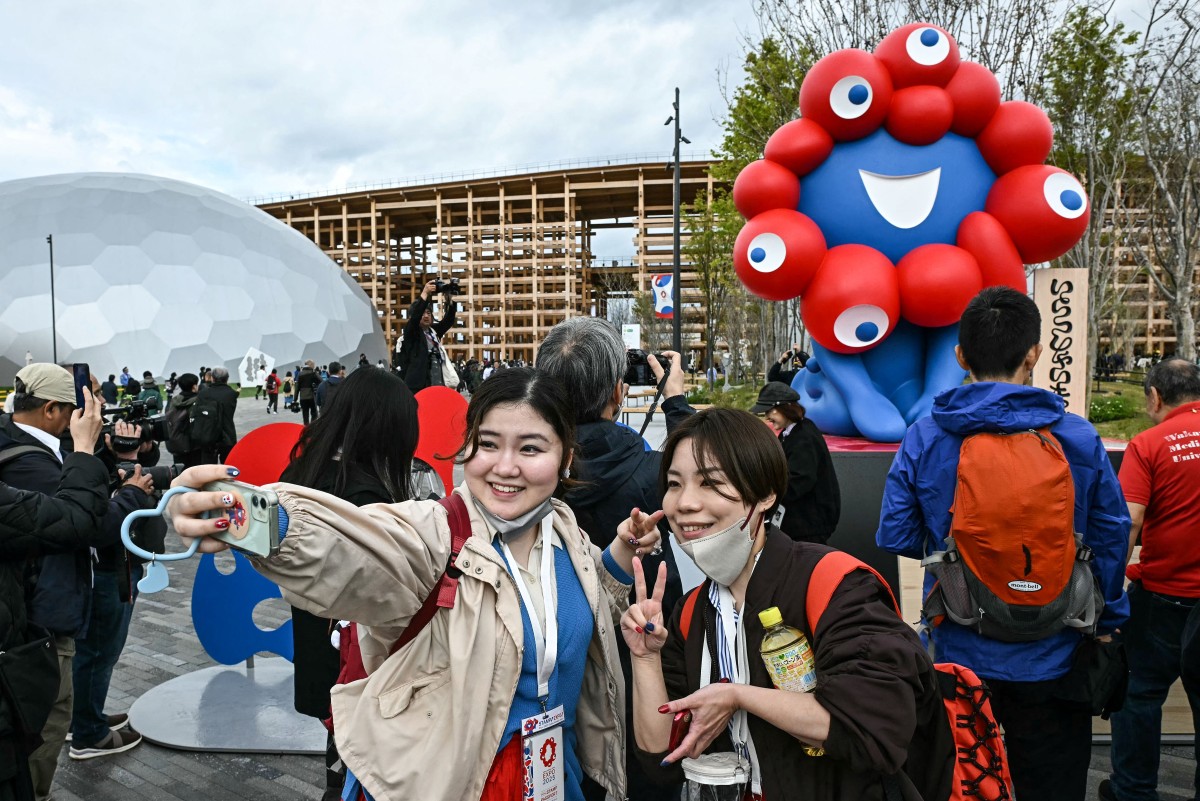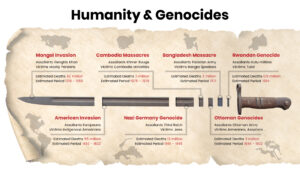Osaka, Japan — World Expo opened on Sunday with 160 countries and regions showcasing their technology, culture and food, with host Japan hoping to provide the world with some much-needed hope.
Highlights at the show in Osaka until mid-October include a Mars meteorite, a beating artificial heart grown from stem cells and Hello Kitty figures in algae form.
Surrounding most of the pavilions — a chance for architects’ fancies to run wild — is the world’s largest wooden structure, the “Grand Ring”.
Its creator Sou Fujimoto told AFP that Expo is a “really beautiful, precious opportunity where so many different cultures… and countries come together in one place to create diversity and unity”.
But with conflicts raging and US President Donald Trump’s tariffs causing economic turmoil, that may be optimistic.
“Not for sale” states a yellow and blue sign over Ukraine’s booth — echoing defiant comments from leader Volodymyr Zelensky about the war with Russia, which is absent at Expo 2025.
Yahel Vilan, head of Israel’s equally compact pavilion — there is also a Palestinian one — featuring a stone from Jerusalem’s Western Wall, told AFP that “we came with a message of peace”.
The US building has the theme “America the Beautiful”, but with no mention of Trump’s trade policies.
Instead it focuses on the country’s landscapes, AI tech and space, including a simulated rocket launch where dry-ice blasters appear to ignite above visitors’ heads.
The nearby Chinese pavilion, evoking a calligraphy scroll, focuses on green technology and lunar samples brought by the Chang’e-5 and Chang’e-6 probes.
Human washing machine –
After enjoying the view and sea breeze atop the Grand Ring’s “skywalk”, hungry visitors can stop by the world’s longest sushi conveyor belt or meet many-eyed Expo 2025 mascot Myaku-Myaku.
Among the more bizarre displays are 32 sculptures of Hello Kitty dressed as different types of algae — to symbolize the plant’s many uses — and a “human washing machine” that shows imagery based on the bather’s heart rate.
Elsewhere are demonstrations of drone-like flying vehicles, and the tiny artificial heart made from induced pluripotent stem cells (iPS) shown in public for the first time.
“It has an actual pulse,” Byron Russel of Pasona Group, which runs the exhibit, told AFP.
Themes of sustainability run through the Expo, including at the bauble-like Swiss pavilion, which aims to have the smallest ecological footprint.
But Expos have been criticized for their temporary nature, and after October Osaka’s man-made island will be cleared to make way for a casino resort.
According to Japanese media, only 12.5 percent of the Grand Ring will be reused.
World Expo is held every five years in different global locations. Here are five things to know about this event, which runs until mid-October.
– Grand Ring –
Encircling dozens of national pavilions is the Grand Ring — recognized by Guinness World Records as the planet’s largest wooden architectural structure.
Architect Sou Fujimoto says his edifice, which cost 34.4 billion yen ($230 million) and has a circumference of two kilometers (1.2 miles), is a symbol of unity.
Latticed beams hold up a sloping roof, 20 meters (65 feet) tall at its highest point, which doubles as a “skywalk”.
Fujimoto told AFP that he chose wood as a sustainable material.
But Japanese media say just 12.5 percent of the temporary structure will be reused — down from the original plan of 25 percent.
‘Mysterious’ mascot –
Myaku-Myaku, Expo 2025’s mascot, is red and blue with five googly eyes dotted around its smiling mouth — and one more eye on its bobbly red tail.
It is “a mysterious creature born from the fusion of cells and water”, according to event organizers.
“Basking in the sunlight is the source of its energy” and sometimes the shape-shifting Myaku-Myaku “forgets its original form”, they say.
Despite puzzled reactions when it was unveiled, the mascot has since become popular among social media users in Japan, and has even inspired fan art.
Slow ticket sales –
Expo is also known as a World’s Fair, and the phenomenon, which brought the Eiffel Tower to Paris, began with London’s 1851 Crystal Palace exhibition and is held every five years.
The 2020 edition in Dubai was postponed by the Covid-19 pandemic, so Osaka Expo organizers say it will “restore much-needed connections” and “provide the opportunity to create a better tomorrow”.
Osaka last hosted the Expo in 1970 when Japan was booming and its technology the envy of the world. It attracted 64 million people, a record until Shanghai in 2010.
But 55 years on Japan is less of a trendsetter and opinion polls show low levels of enthusiasm among the public for the Expo, particularly after it went 27 percent over budget.
So far 8.7 million advance tickets have been shifted, below the pre-sales target of 14 million.
Japan is also experiencing a record tourism boom, meaning accommodation in Osaka — near hotspot Kyoto — is often fully booked with prices sky-high.
Local resident Hirofumi Hayashi, 65, told AFP he hoped to visit the Expo “if my schedule allows”.
“To be honest, I don’t think it’s worth spending so much money on. There are many other things that deserve to be prioritized,” he told AFP.
Meteorites and Marley –
Japan’s pavilion has a meteorite from Mars discovered in Antarctica by Japanese researchers — the first time it will be on display to the public.
Hungry visitors can stop by Japan’s longest sushi conveyor belt before checking out cutting-edge robots, drone shows and a beating “heart” grown from stem cells.
The US pavilion, themed “America the Beautiful”, has an LED-screen simulator of a NASA rocket launch.
Elsewhere visitors can help polish five heart-shaped “Love and Peace” rocks, while the Jamaica pavilion features life-size Bob Marley and Usain Bolt statues and a bobsleigh.
Ukraine ‘peace’
Russia announced in 2023 — the year after it invaded Ukraine — that it would not participate in the Expo.
But Ukraine is present, despite its dire financial situation caused by the war — a decision that Osaka’s governor has said “conveys peace”.
It will reportedly show 18 objects including helmets used in the restoration of power facilities damaged by the Russian invasion.








